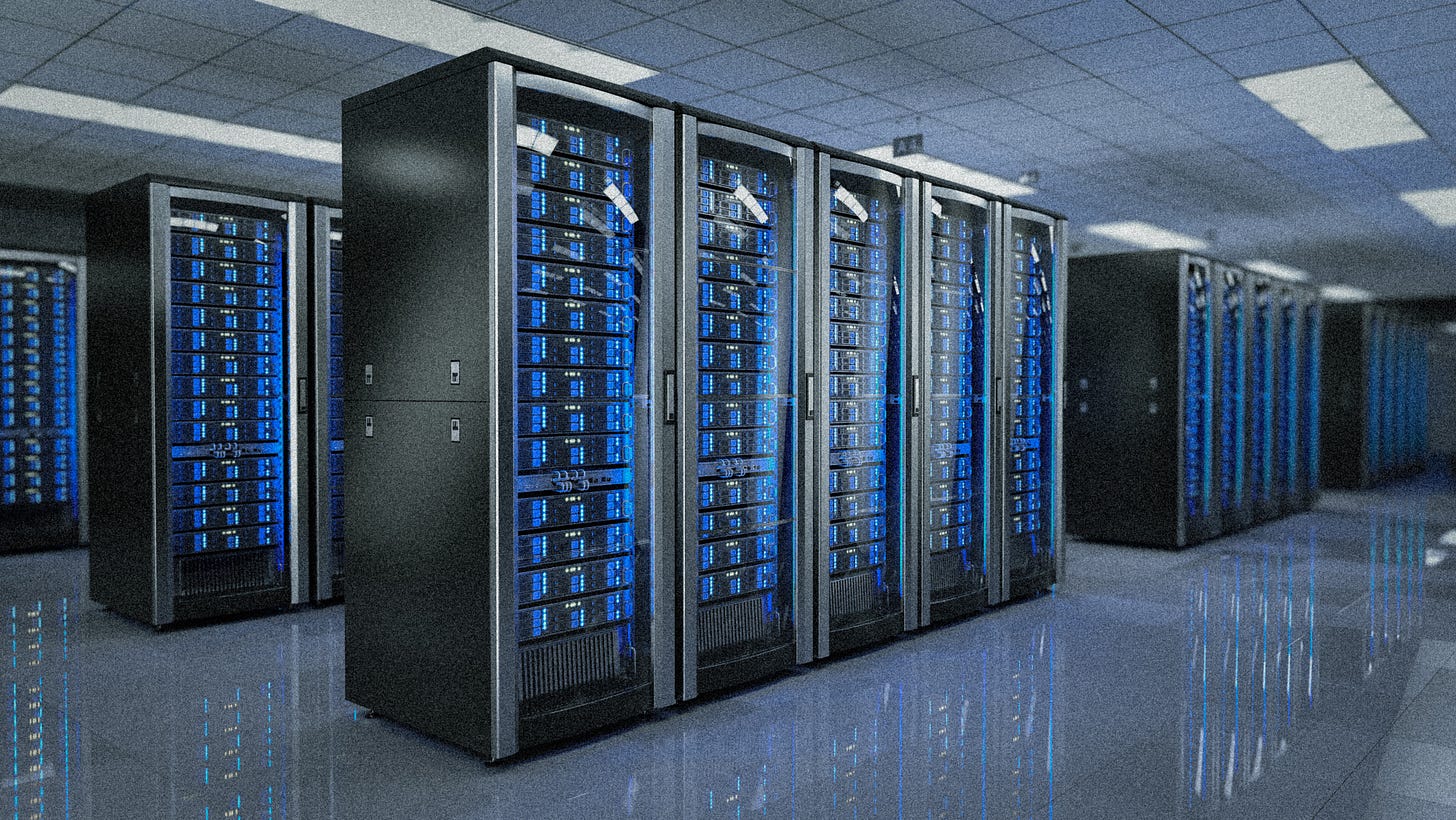No Handouts for Data Centers
They don’t work for stadiums, and they won’t work for AI.
Earlier this month, the Washington D.C. City Council advanced a package to subsidize a new NFL stadium by providing the Washington Commanders a 180-acre site, $1 billion in taxpayer funding, and another $1 billion in tax breaks over 30 years. This decision flies in the face of decades of research showing such subsidies don’t pay off.
But lessons learned from stadium subsidies also have surprising implications for how we approach data centers.
The key analytical question about stadium subsidies is straightforward: Do new revenues and jobs outweigh the cost of the subsidy? A wide array of economic research unequivocally says no.
Because major sports teams are worth billions of dollars, or are owned by billionaires, many view stadium subsidies as transfers of wealth from the public to the rich. As the Washington Post editorial board put it, the D.C. deal “essentially amounts to corporate welfare.”
So why do cities and states keep subsidizing stadiums? Simple: People love sports. Home team jerseys fill downtowns. Athletes, coaches, and cheerleaders are local celebrities. Stadiums define skylines, with some calling them modern cathedrals.
Whether these subsidies are worth it is a local political decision, since the financial costs and the cultural benefits are local (one caveat: a tax loophole lets municipalities issue tax-exempt bonds for stadiums, though a bipartisan bill could fix that).
Now, construction subsidy debates are spreading to a very different kind of structure: namely, power-hungry data centers.
Today’s artificial intelligence gold rush is driving 75% of the demand for these facilities, and as the old adage goes, during a gold rush it’s often best to sell picks and shovels. Big tech companies are the predominant owners, with Microsoft, Amazon, and Google operating nearly two-thirds of AI data centers. Meta, Elon Musk’s xAI, and Apple are joining in as well.
If subsidies for billion-dollar sports teams constitute corporate welfare, then what do we call the handing out of public money to trillion-dollar tech giants?
The Commanders’ large tax breaks mean Washington, D.C. will give up over $30 million a year. Meanwhile, at least ten states each already forgo over $100 million annually in data center tax breaks; Texas alone exceeds $1 billion.
And the physical footprint of the centers is staggering. One data center under construction in Texas for Oracle and OpenAI covers five times the amount of land set aside for the Commanders’ stadium.
Although data center jobs pay better, stadiums typically employ a lot more people—usually a couple thousand compared to just a few dozen workers for data centers, aside from temporary construction jobs.
Stadiums attract crowds who spend locally during events; data centers do not.
If stadiums are seen as modern cathedrals, data centers are more correctly dismissed as architectural “blight” by most who encounter them.
Stadium projects have local costs and local benefits. Data centers, on the other hand, produce global benefits while sticking nearby communities with increased electricity prices, air pollution, and water shortages.
Yet states are participating in a “race to the bottom,” offering ever-larger tax breaks and subsidies to attract data centers. With 42 states now offering some form of public benefits, the bottom is low indeed.
In Missouri, data centers need to create only ten new jobs and invest just $25 million to avoid 100% of all state and local sales and use taxes. This trend is bad for states and for communities, as it allows big AI companies to play states against each other in order to get bigger benefits for themselves, while taxpayers get ever-fewer resources and benefits.
Now the federal government is joining in. Last month, President Trump signed an executive order to fast-track new AI data centers, offering big tech companies subsidies, tax breaks, and even federal land.
The order also waives or speeds up environmental reviews and permitting for these centers, regulations which have posed challenges for projects ranging from broadband to housing—not just data centers. Rather than special treatment for one industry, systemic reform is needed.
The president’s move drew criticism from the Left and, unexpectedly, from some Republicans too, including Rep. Marjorie Taylor Greene (R-GA), who expressed concerns about jobs, water and environmental issues, states’ rights, and the downsides of competition between states.
These kinds of problems are, in fact, exactly why the federal government was created in the first place. One central issue for the framers of the Constitution was addressing interstate economic issues in which parochial competition would be damaging. The answer was to give the federal government the power to step in.
How could this work today? Congress could simply prohibit state and local governments from giving data centers special treatment relative to any other industry.
Communities across America are feeling the consequences of the proliferation of data centers that require vast amounts of energy, water, and land. This means that federal, state, and local policymakers must get serious about commensurate, bold policies to deal with energy demands and emissions, air pollution, water needs and wastewater, and even blight.
Big Tech’s demand for data centers is high today, but the downsides of data centers for communities are also high. Tech companies should be begging communities for access—not the other way around. Taxpayer handouts for sports stadiums offer some intangible local benefits at costs local politicians can weigh. States subsidizing tech giants while local communities pay the costs, by contrast, defies justification.






